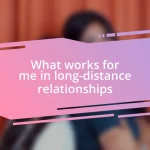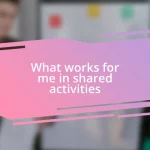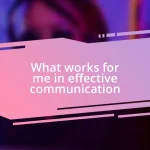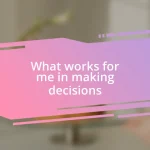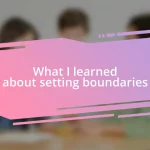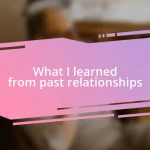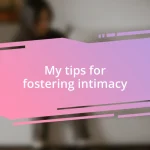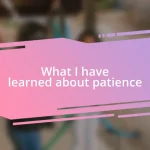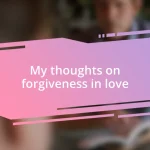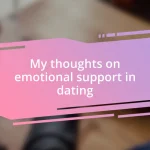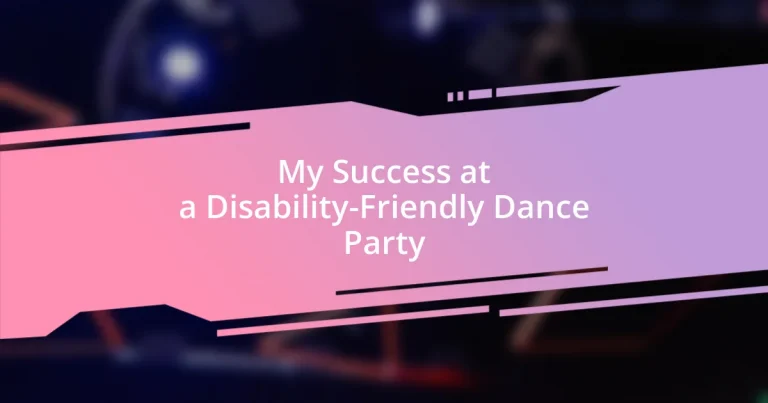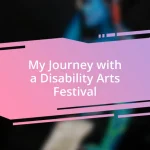Key takeaways:
- Disability-friendly events prioritize accessibility and inclusivity through thoughtful planning, creating a supportive community among attendees.
- Effective preparation includes clear venue layout, diverse music choices, and proactive communication about accessible features, enhancing participation and enjoyment.
- Engagement with the community and creative adaptations in dance styles can transform experiences, fostering confidence and connection among all attendees.
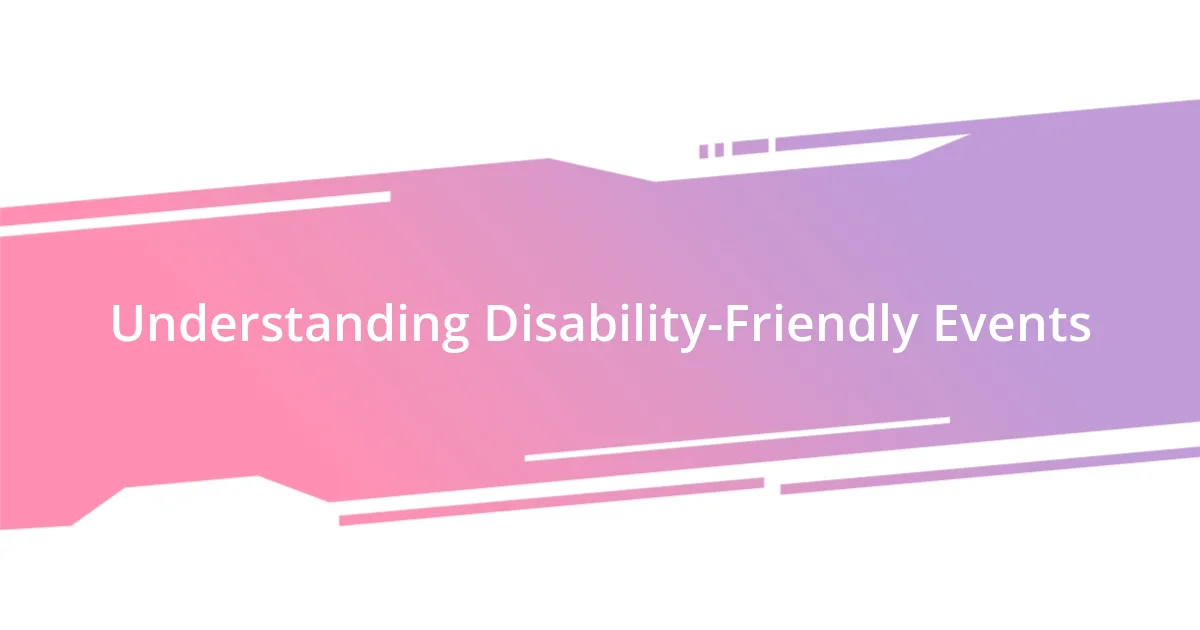
Understanding Disability-Friendly Events
When I first attended a disability-friendly event, I was uncertain about what to expect. Would it be accommodating enough? To my delight, I found that these events prioritize accessibility, ensuring that everyone can participate comfortably, from providing wheelchair ramps to offering sensory-friendly spaces. It’s remarkable how such thoughtful planning can foster an inclusive atmosphere where attendees feel seen and respected.
These gatherings often create a unique sense of community, as attendees share their experiences and support one another. I remember chatting with someone who used a service dog; their insights on navigating public spaces opened my eyes to challenges I had never considered. Have you ever thought about how often we take accessibility for granted? It was a powerful reminder that, in fostering understanding, we not only embrace diversity but also enrich our own experiences.
I find that the best disability-friendly events often go beyond mere compliance with regulations. They encourage creativity in design, whether through interactive activities or entertainment options tailored for different needs. For instance, a dance floor with varied lighting and sound levels can make a beautiful difference. Have you had an experience that made you reassess what inclusion really means? It’s those moments of connection that leave a lasting impression and drive the true spirit of disability-friendly events.
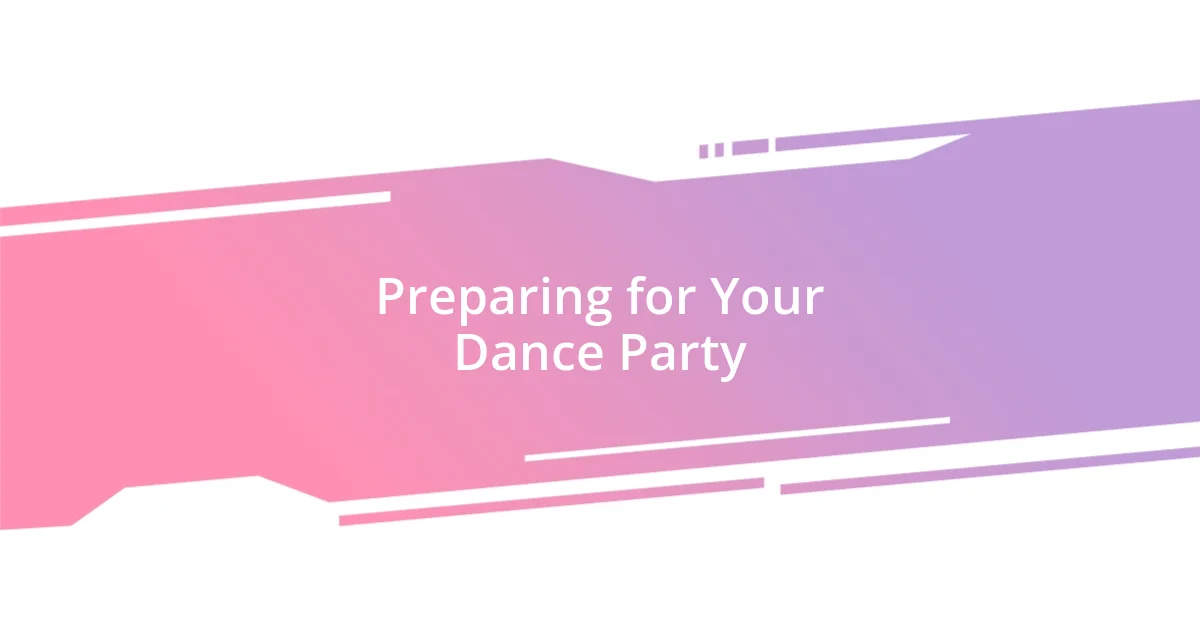
Preparing for Your Dance Party
When preparing for your dance party, I always recommend creating a checklist to ensure that every detail aligns with your vision of inclusivity. This includes considering elements like the venue layout, music selections, and activities. From my experience, having diverse music options—like varying tempos and genres—can really elevate the experience for everyone, making it more fun and engaging for all abilities.
Another important aspect of preparation is communication. I’ve found that sharing information about the event with potential attendees, like accessible features and sensory-friendly options, is crucial. It not only builds excitement but also helps people feel more at ease about attending. Whenever I announce an event, I feel a sense of pride knowing that this preparation empowers others to join in.
Lastly, consider recruiting volunteers who understand the needs of the attendees. Their insight can be incredibly valuable. For instance, I once worked with a volunteer who had a keen eye for adjusting areas of the dance floor to accommodate wheelchair users, ensuring everyone had a great time. Little things like this can significantly impact the overall atmosphere and enjoyment of the event!
| Preparation Aspect | My Experience |
|---|---|
| Venue Setup | Ensure clear pathways and space for mobility aids to navigate easily. |
| Music Selection | Offer a variety that includes slower and faster rhythms to cater to diverse tastes. |
| Pre-Event Communication | Share accessibility information ahead of time to build confidence in potential attendees. |
| Volunteer Involvement | Involve knowledgeable volunteers to assist and adapt the environment as needed. |
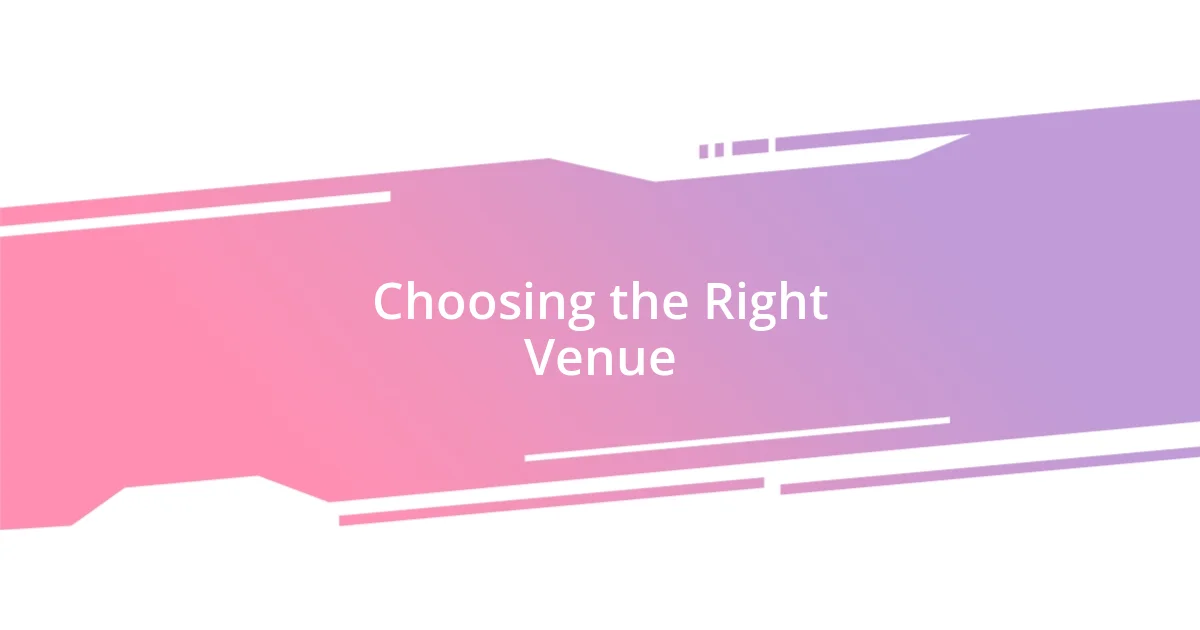
Choosing the Right Venue
Choosing the right venue can truly set the tone for a disability-friendly dance party. During one of the events I organized, I discovered that a venue with spacious layouts made a significant impact. It allowed everyone to move freely, ensuring that people using mobility aids could dance without feeling crowded. I definitely encourage checking the venue for key features that enhance accessibility.
Here are some crucial aspects to consider when selecting a venue:
- Accessibility: Look for ramps, elevators, and clear pathways.
- Acoustic Design: I’ve found that venues with sound-absorbing materials can significantly reduce overwhelming noise for those with sensory sensitivities.
- Restroom Facilities: Ensure that accessible restrooms are available and adequately equipped.
- Parking: Ample accessible parking spaces can alleviate stress and set a welcoming tone right from the start.
- Staff Training: Knowledgeable staff can make a huge difference. At one party, the venue staff was proactive in assisting my friend, who needed help navigating her wheelchair.
It’s these details that shape an event into an experience that resonates deeply with all attendees. I’ve felt the warm energy of a well-chosen space, where everyone feels invited to express themselves, and that’s something I cherish.
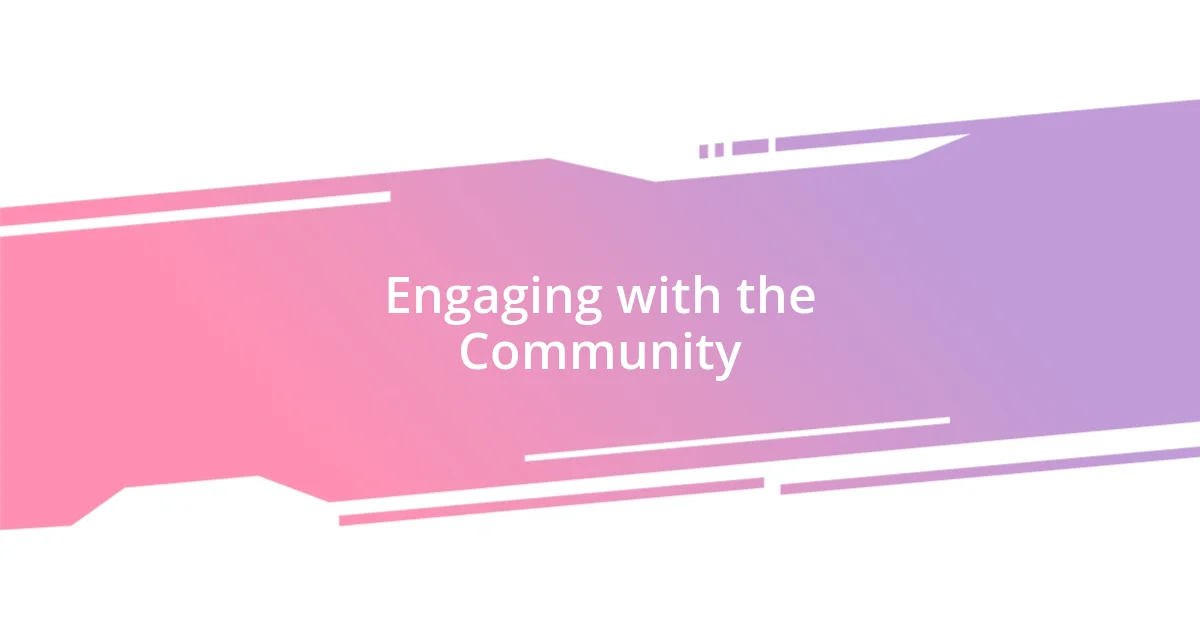
Engaging with the Community
Engaging with the community is not just about inviting people to the dance floor; it’s about creating a vibrant environment where everyone feels they belong. I remember one event where we reached out to local disability organizations and shared our vision. The excitement that built as I saw people from diverse backgrounds come together was nothing short of heartwarming. It really confirmed for me that a simple invite can foster a sense of community that goes beyond the dance party itself.
Building relationships with community members extends to actively listening to their feedback. I once joined an informal gathering with attendees from previous events, and they shared invaluable insights on what worked and what didn’t. Their thoughts helped me refine future events, creating a space that not only catered to their needs but also reflected their desires. Have you ever experienced the power of constructive feedback transforming an event? I know I have, and it’s truly motivating.
Lastly, collaboration can elevate the experience in unexpected ways. For instance, partnering with local artists to perform or lead dance workshops introduced fresh energy and creativity. I was particularly moved when one of the artists shared their own story of resilience during the event. It fostered a deeper connection among attendees and reminded us all of the importance of celebrating our unique journeys. Isn’t it amazing how creativity can weave cohesion into a community?
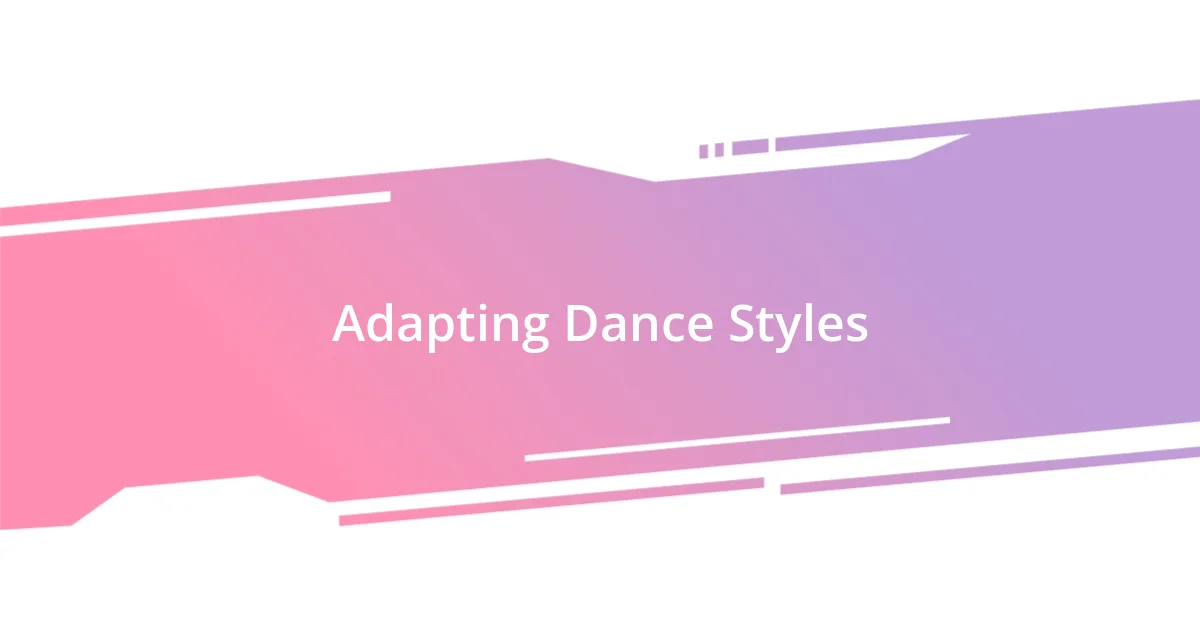
Adapting Dance Styles
Adapting dance styles for a disability-friendly environment is pivotal in creating an inclusive atmosphere. I remember attending a dance workshop where traditional moves were modified to allow everyone to participate, regardless of their physical abilities. Watching how simple adjustments, like changing the rhythm or using hand gestures instead of footwork, empowered individuals to express themselves was incredibly inspiring.
One approach I found particularly effective was incorporating seated dance styles alongside standing ones. During a recent event, I noticed how a group of participants in wheelchairs transformed the dance floor with their dynamic movements. It was a fantastic reminder that dancing is not solely about standing; it can be just as vibrant and expressive while seated. Have you ever witnessed such a transformation? It truly showcases how creativity knows no bounds when it comes to adapting art forms for everyone.
Another impactful method is utilizing sensory-friendly elements in the choreography. For instance, I collaborated with a choreographer who integrated visual signals along with music cues to guide the dancers. Observing attendees navigating the cues with joy and excitement reinforced my belief that dance can bridge barriers. Wouldn’t it be incredible if every dance party embraced such thoughtful adaptations? These approaches foster a sense of freedom and joy, allowing everyone to immerse themselves in the rhythm of the night.
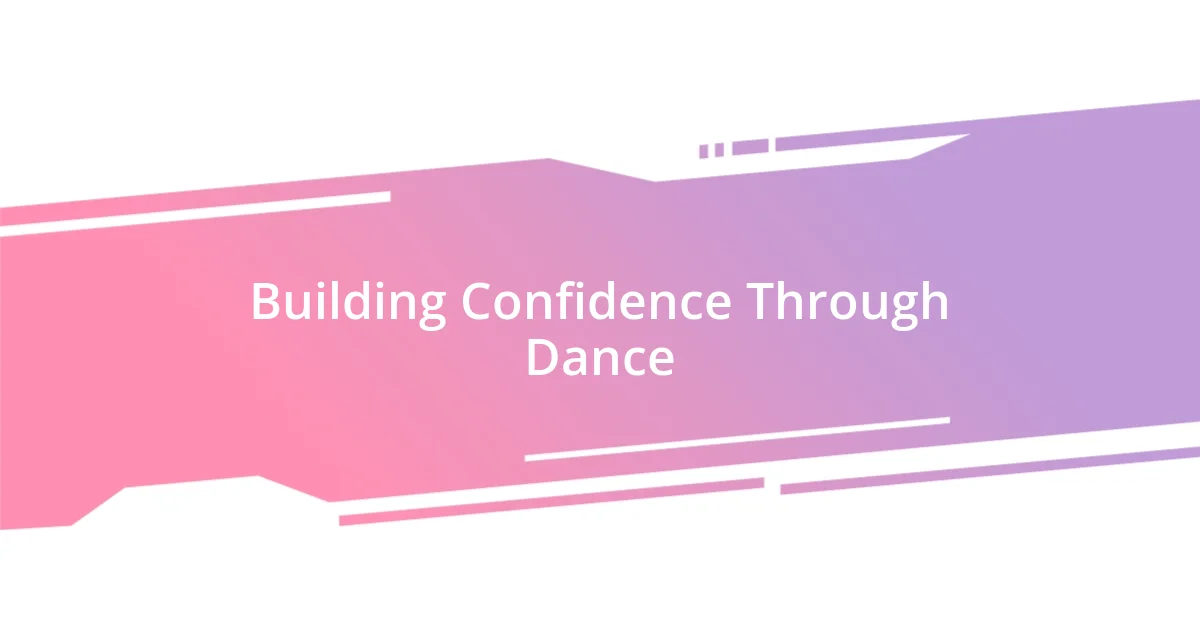
Building Confidence Through Dance
Building confidence through dance can be a transformative experience. I vividly recall a shy participant at one of our events who initially watched from the sidelines. With a little encouragement, they stepped onto the dance floor, and I could see their demeanor shift. It was as if each movement became a building block, gradually reconstructing their self-assurance. Have you ever seen someone bloom just by taking that first step? It’s truly magical.
On another occasion, I organized a dance circle where everyone took turns sharing a move. I noticed how each participant’s confidence grew with each rotation, as they realized they had something special to contribute. It reminded me of how powerful self-expression can be in building a sense of belonging. When attendees witnessed their peers cheering them on, it felt like a collective uplifting moment. How beautiful it is to create an environment where vulnerability is met with encouragement!
Moreover, the rhythm of dance fosters not only physical movement but also emotional release. I talked with a participant who had faced various challenges, and they shared how dancing allowed them to channel their emotions into artistic expression. They described dancing as a form of liberation, where their insecurities transformed into grace. Doesn’t that encapsulate the essence of dance? It’s an outlet that helps us shed our fears and embrace our uniqueness, all while fostering confidence along the way.
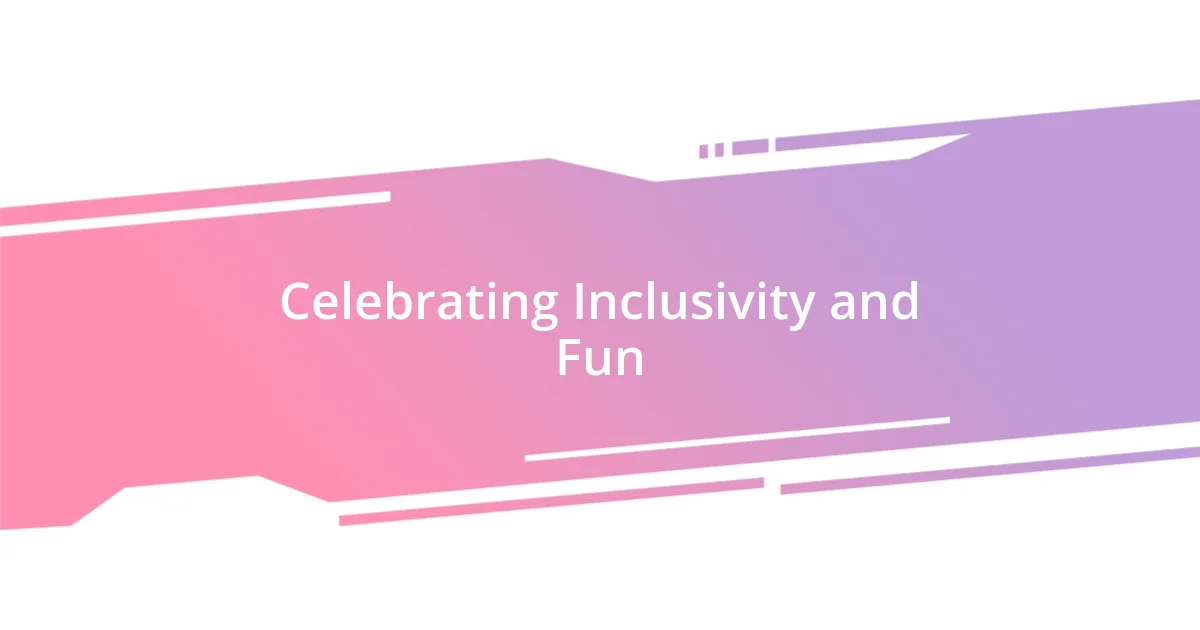
Celebrating Inclusivity and Fun
There’s something incredibly joyous about dancing together in a space that celebrates inclusivity. I remember a moment at the last disability-friendly dance party when everyone formed a circle, inviting each person to showcase their unique moves. Watching that blend of styles and personalities made me rethink what we often consider “dance” and helped me see it as a wide spectrum of expression. Have you ever felt that exhilarating sense of togetherness when everyone participates, regardless of ability? It was a vivid reminder that fun knows no boundaries.
In my experience, creating an inclusive environment isn’t just about adapting dance moves; it’s also about fostering an atmosphere where laughter and friendship thrive. During one memorable night, I saw two participants sharing stories between dances, completely immersed in each other’s company while the music played. The spontaneous bursts of laughter echoed across the room, and it reminded me that connections are often formed between the beats of a song. Isn’t it these authentic moments that truly embody the spirit of fun?
Each time I step onto the dance floor, I’m reminded that it’s not just about the rhythm but the relationships we cultivate. One participant told me how they found a newfound friendship that night, forging bonds through shared dance experiences that felt like home. When I witnessed the genuine smiles and the pure joy radiating from participants, it struck me that this is the heart of a disability-friendly dance party. Isn’t it magical to think that through a simple joy such as dancing, we can create a world where everyone feels seen and celebrated?
